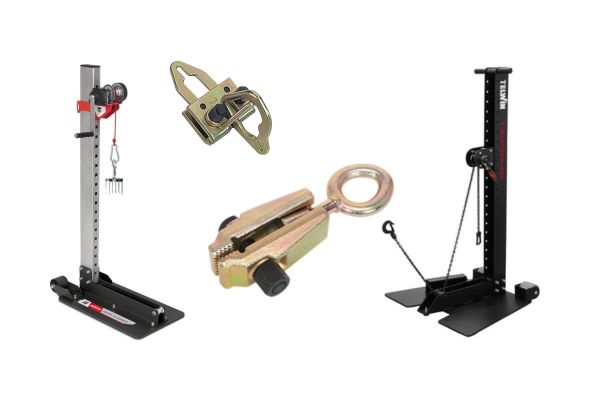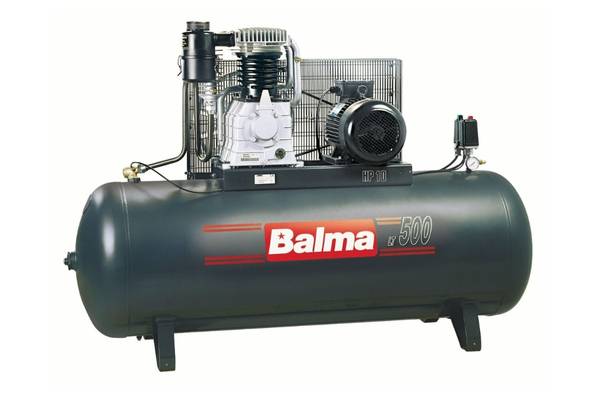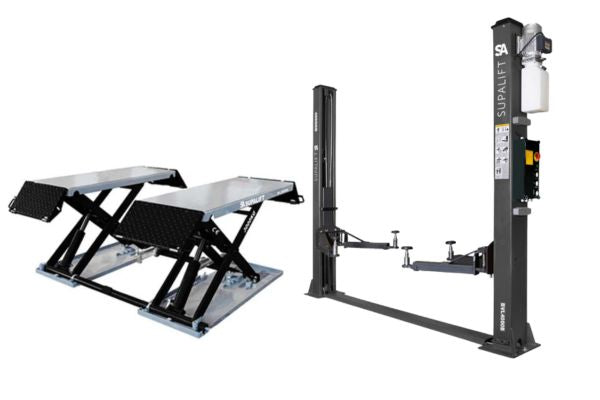What Size Air Compressor Do I Need?
Choosing the right air compressor is a pivotal decision for both professionals and hobbyists alike, as it directly impacts the efficiency and quality of your work. Compressors come in various sizes and types, each designed to meet specific needs, ranging from simple household tasks to complex industrial applications.
The size of the compressor not only dictates how well it can handle certain tools but also affects its portability, energy consumption, and overall performance.
For instance, a compressor that's too small may run continuously and struggle to keep up with your tools, leading to delays and potential damage to both the compressor and tools.
Conversely, an oversized compressor can be an unnecessary expense in terms of initial cost and ongoing energy usage.
We aim to demystify the process of selecting the right size compressor for your needs. Whether you're a DIY enthusiast working on home improvement projects, a professional contractor juggling various tools, or someone just starting out in a trade, understanding how to match a compressor to your requirements is crucial.
We'll guide you through the key factors to consider – from understanding the size metrics like tank size, CFM (Cubic Feet per Minute), and PSI (Pounds per Square Inch), to determining the specific demands of your tools and projects.
By the end of this article, you'll have a clearer picture of what size compressor will best fit your personal or professional needs, ensuring efficiency, cost-effectiveness, and satisfaction in your work.
Quick Summary
 Simple Quick FAQs to determine you compressor needs and narrow down your choices
Simple Quick FAQs to determine you compressor needs and narrow down your choices Explain the difference between CFM PSI and tank size and what the relationship is between them all.
Explain the difference between CFM PSI and tank size and what the relationship is between them all. Check The CFM requirements for your tools. Decide which may be used at the same time to determine a possible CFM requirement. Download our free CFM calculator.
Check The CFM requirements for your tools. Decide which may be used at the same time to determine a possible CFM requirement. Download our free CFM calculator.

Get started
First you need need to decide what do you want to use your compressor for by asking yourself a few questions.
QUICK QUIZ GUIDE QUESTIONS
-
Industrial Use, Automotive Work, Construction Projects, Home/DIY Projects, Other (please specify)
-
Daily, Several Times a Week, Weekly, Occasionally, Rarely
-
400V, 230V, Petrol, Diesel
-
Daily, Several Times a Week, Weekly, Occasionally, Rarely
-
Portable, Stationary, No Preference
-
Yes, I need a quiet compressor, No, noise is not a concern, Not Sure
-
Under £500, £500 - £1000, £1000 - £2000, £2000 - £5000, Over £5000, Not Sure
CFM (Cubic Feet per Minute) and PSI (Pounds per Square Inch:
These are two critical metrics used to evaluate the performance of air compressors and air tools. Understanding the difference between these two is essential in selecting the right compressor for your needs and ensuring that it matches the requirements of the tools you plan to use.
PSI (Pounds per Square Inch):
-
Definition: PSI is a unit of pressure; it measures the force that the compressed air exerts on the walls of the container (in this case, an air compressor tank).
-
Importance: PSI indicates the power behind the air that is being compressed. Higher PSI means the air is compressed under greater pressure. This is critical for certain tools that require a high-pressure level to operate correctly.
-
Usage in Tools: Like CFM, tools have minimum PSI requirements. While most standard tools operate at 90 PSI, some may require higher pressure. The compressor needs to be able to meet or exceed this pressure requirement.
-
Selection Guide: Ensure your compressor can achieve the highest PSI requirement of your tools. However, remember that having a higher PSI than needed does not compensate for a lack of CFM.
CFM (Cubic Feet per Minute):
-
Definition: CFM measures the volume of air that an air compressor can deliver at a specific pressure. It represents the flow rate or the amount of air a compressor can supply.
-
Importance: The CFM rating is crucial because it determines how many tools you can run simultaneously and how effectively those tools will operate. If a tool requires more CFM than the compressor can provide, the tool won't work properly.
-
Usage in Tools: Different tools require different amounts of air flow to operate correctly. For example, spray paint guns, pneumatic sanders, and nail guns will have specific CFM requirements. If your compressor doesn't meet these requirements, the tool may not function efficiently or could fail to operate.
-
Selection Guide: When choosing a compressor, you should look for one that can deliver a CFM rating higher than the highest CFM requirement of your tools. This ensures consistent performance and reduces wear on the compressor.
-
Use Our CFM Calculator below to work out the correct compressor CFM to run your tool.
Please note hobby type compressors are designed to run single air tools at any one time. if you want to run more tools simultaneously then add your tool CFMs together and input into the calculator.
Relationship between CFM and PSI:
-
Interdependence: CFM and PSI are interrelated. As PSI increases, CFM decreases, and vice versa, for a given compressor's capacity. A compressor can provide a high flow rate (CFM) at a low pressure (PSI), but as the pressure (PSI) increases, the flow rate (CFM) it can sustain decreases.
-
Balancing Act: For effective and efficient operation, there needs to be a balance between CFM and PSI. Both must meet or exceed the requirements of the tools being used.
Summary:
In summary, when selecting an air compressor, it’s not just about choosing the one with the highest PSI or CFM rating. You need to consider the specific requirements of your tools. A compressor with a CFM rating higher than the most demanding tool you plan to use, and a PSI capacity that meets or exceeds the highest PSI requirement of your tools, will ensure efficient operation and longevity of both your compressor and your air tools.
| Air Tool | Average CFM @ 90 PSI | PSI Requirement |
|---|---|---|
| Brad Nailer | 0.3 | 70-90 |
| Finish Nailer | 0.5 | 70-90 |
| Framing Nailer | 2.2 | 100-130 |

















































